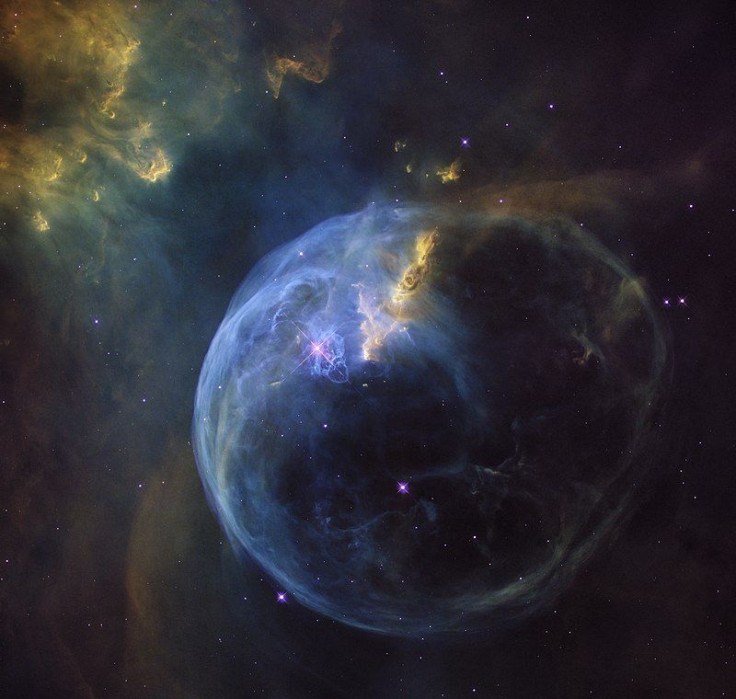NASA Shares Photo Of Massive Star Creating A Stellar Bubble
KEY POINTS
- NASA shared an image of a nebula created by a massive star
- The image was taken by the Hubble Space Telescope
- The central star is 45 times more massive than the Sun
In celebration of the Hubble Space Telescope’s upcoming anniversary, NASA shared a stunning photo of a massive nebula. The image shows a massive stellar bubble created by a star that’s 45 times more massive than the Earth’s Sun.
NASA identified the massive cosmic object in Hubble’s photo as NGC 7635, which is also known as the Bubble Nebula. It is located in the Cassiopeia constellation and is about 7,100 light-years from Earth.
According to NASA, the central star of the nebula is about 45 times more massive than the Sun. Due to its mass, the temperature of the star rises to a point that hot gas escapes from its surface. As the gas moves away from the star at speeds of over 4 million miles per hour, they become stellar winds.
These stellar winds collide with the cold interstellar gas in space. The collision causes the latter to be pushed out. The interaction between the stellar winds and cold gas forms an expanding bubble-like structure around the star.
“This outflow sweeps up the cold, interstellar gas in front of it, forming the outer edge of the bubble much like a snowplow piles up snow in front of it as it moves forward,” NASA explained in a statement. “As the surface of the bubble's shell expands outward, it slams into dense regions of cold gas on one side of the bubble. This asymmetry makes the star appear dramatically off-center from the bubble, with its location in the 10 o'clock position in the Hubble view.”
The bubble created by the massive star is currently about seven light-years wide. Aside from the massive bubble, pillars made of stellar dust and hydrogen gas can be seen with the nebula.
In Hubble’s photo, these cosmic objects appear with various colors depending on the materials that they are mainly made of.
“Dense pillars of cool hydrogen gas laced with dust appear at the upper left of the picture, and more ‘fingers’ can be seen nearly face-on, behind the translucent bubble,” NASA stated. “The gases heated to varying temperatures emit different colors: oxygen is hot enough to emit blue light in the bubble near the star, while the cooler pillars are yellow from the combined light of hydrogen and nitrogen.”

© Copyright IBTimes 2024. All rights reserved.





















